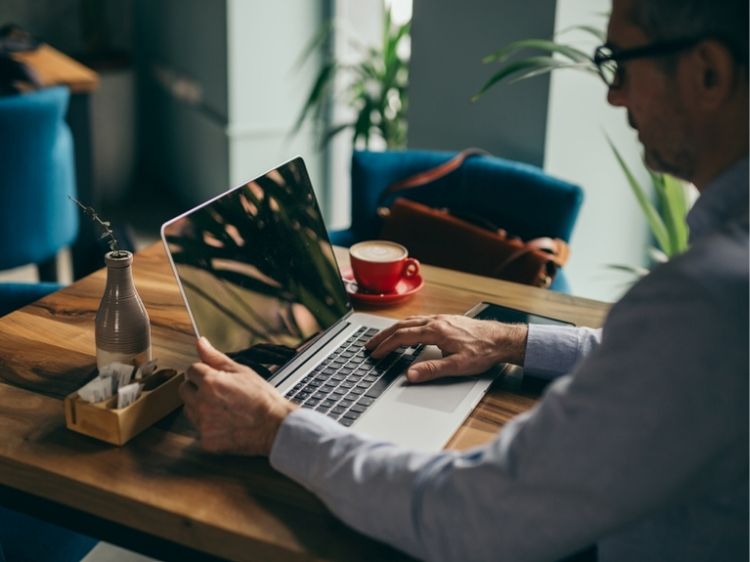What Is Business Casual Attire?
Business casual attire often sparks confusion—what does it really mean? It’s a dress code that lies somewhere between professional business wear and everyday casual clothes. Think of it as a polished, yet comfortable look that’s perfect for workplaces with a relaxed vibe.
In this guide, we’ll dive into the essentials, share examples, and help you create a wardrobe that strikes the perfect balance. After all, first impressions matter, don’t they?
Key Elements of Business Casual Attire
Before you dive headfirst into your closet, let’s break down the basics:
1. Tops
- Button-Down Shirts: A crisp button-down is a staple. Opt for neutral colors like white, light blue, or gray for a versatile look.
- Blouses: For women, a tailored blouse with subtle patterns or solid colors is perfect.
- Polos: Polos work great for a casual spin on business casual, especially in warmer climates.
2. Bottoms
- Chinos and Khakis: These are your go-to pants. They’re polished but not overly formal.
- Dark Jeans: If allowed, pair dark, well-fitted jeans with a smart top. Avoid distressed or baggy styles.
- Skirts: Pencil or A-line skirts that reach the knee are an excellent option for women.
3. Footwear
- Closed-Toe Shoes: Loafers, flats, or ankle boots keep the look professional.
- Sneakers: Clean, minimal sneakers might work in some modern workplaces. Always check the dress code first.
4. Accessories
- Belts: A sleek belt can tie the outfit together.
- Jewelry: Go minimal—stud earrings or a simple necklace work best.
- Bags: A structured tote or a leather briefcase adds sophistication.
Why Does Business Casual Matter?
Employers favor business casual attire because it bridges the gap between formal and relaxed dressing. It allows employees to feel comfortable while still looking professional. Dressing appropriately shows respect for your workplace and can even boost confidence.
Remember, you’re not just dressing for yourself—you’re representing your company’s culture too.
What to Avoid in Business Casual Attire?
To nail the look, steer clear of:
- Ripped or Distressed Clothing: These are far from professional.
- Graphic T-Shirts: Skip logos, slogans, or bold prints.
- Flip-Flops: Save these for the beach.
- Athletic Wear: Gym clothes have no place in a business casual setting.
Business Casual for Women vs. Men
Let’s take a closer look at how business casual differs for men and women:
For Women
- Blouses, cardigans, and tailored blazers are fantastic choices.
- Pair them with slacks, skirts, or even culottes for variety.
- Comfortable flats or low heels work best.
For Men
- Collared shirts (button-downs or polos) paired with chinos are a winning combo.
- You can layer with a blazer or sweater when it’s chilly.
- Loafers or oxfords complete the outfit.
Creating a Capsule Wardrobe for Business Casual Attire
A capsule wardrobe simplifies your mornings and ensures you’re always dressed to impress. Here’s how to build one:
- Choose Versatile Pieces: Neutral colors like navy, beige, and white are easy to mix and match.
- Invest in Quality Basics: A well-made blazer or pair of chinos can elevate any look.
- Limit Statement Items: Keep bold patterns or colors to a minimum.
How to Transition from Business Formal to Business Casual?
Making the switch? Here’s how to tone down the formality:
- Swap tailored suits for blazers paired with chinos or skirts.
- Trade formal shirts for polos or patterned button-downs.
- Replace leather dress shoes with loafers or flats.
FAQs About Business Casual Attire
1. Can I Wear Jeans in a Business Casual Setting?
Yes, but only if they’re dark-washed, free of rips, and well-fitted. Always check with your company’s dress code to be sure.
2. Are Sneakers Acceptable for Business Casual?
In some modern workplaces, clean and minimal sneakers are fine. However, traditional offices might not allow them.
3. What’s the Difference Between Business Casual and Smart Casual?
Business casual is slightly more formal, focusing on workplace-appropriate attire, while smart casual leans more toward relaxed and trendy outfits.
4. Is It Okay to Wear T-Shirts in Business Casual?
Plain, high-quality t-shirts can work if paired with a blazer or cardigan, but avoid graphic or slogan tees.
5. Can Women Wear Dresses for Business Casual?
Absolutely! Opt for knee-length dresses in solid colors or subtle patterns. Avoid anything too tight or revealing.
Business Casual in Different Industries
Not all workplaces interpret business casual the same way. Here’s a quick rundown:
- Tech Startups: Jeans and sneakers are often acceptable.
- Corporate Offices: Stick to blazers, slacks, and polished footwear.
- Creative Fields: Feel free to experiment with bold colors or prints.
Wrapping Up: Mastering Business Casual Attire
Business casual attire is about blending professionalism with personal comfort. With these tips, you’ll not only dress the part but also feel confident and ready to tackle any workday challenges.
When in doubt, keep it simple and polished—because it’s always better to be slightly overdressed than underdressed.
Authoritative Sources
- Business casual tips: https://www.thebalancecareers.com
- Capsule wardrobe guide: https://www.realmenrealstyle.com
- Workplace dress codes: https://www.forbes.com

